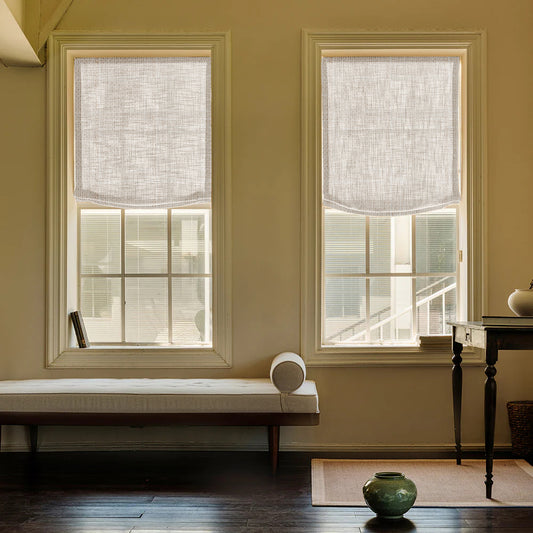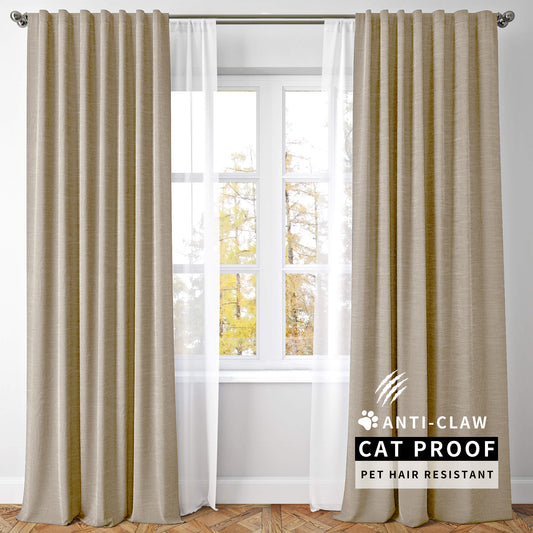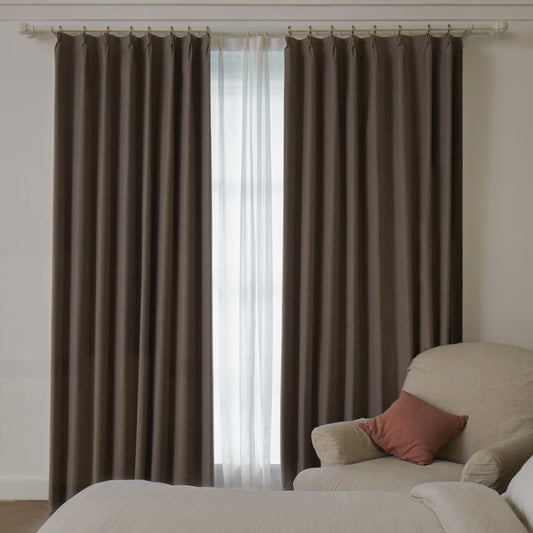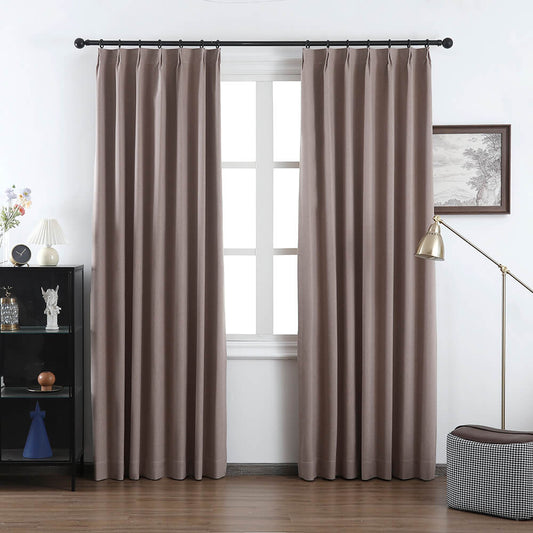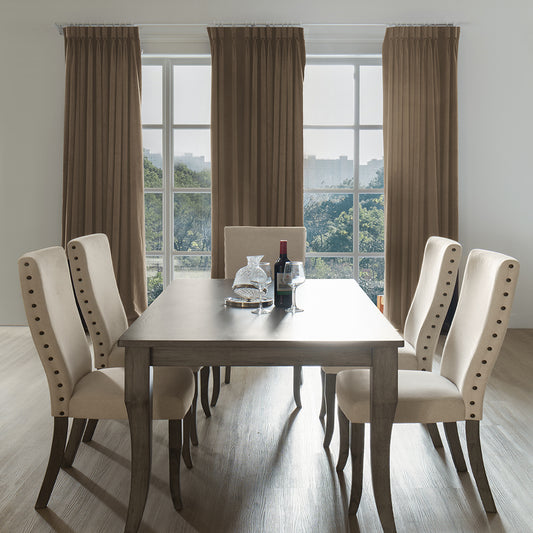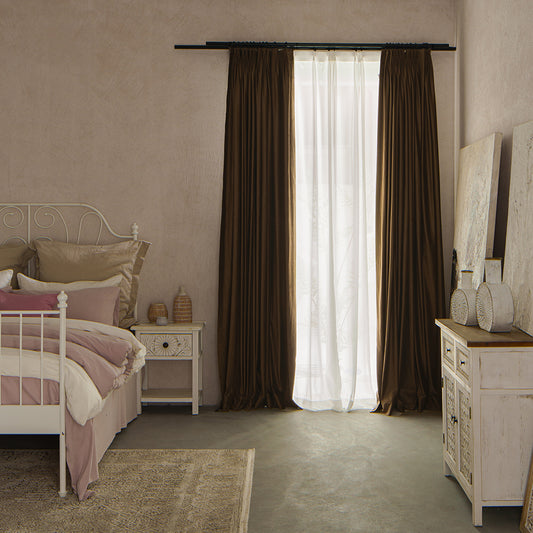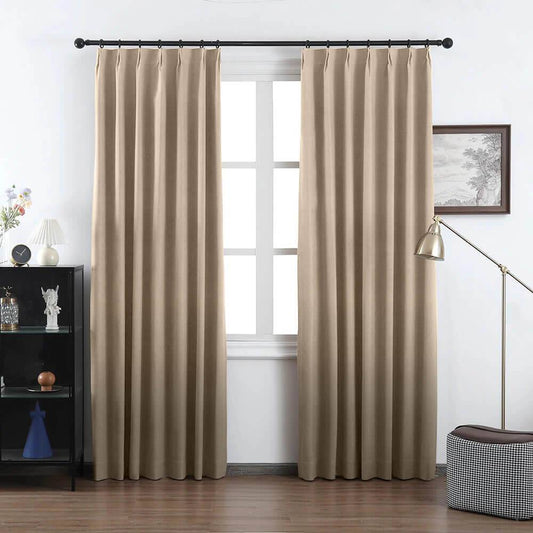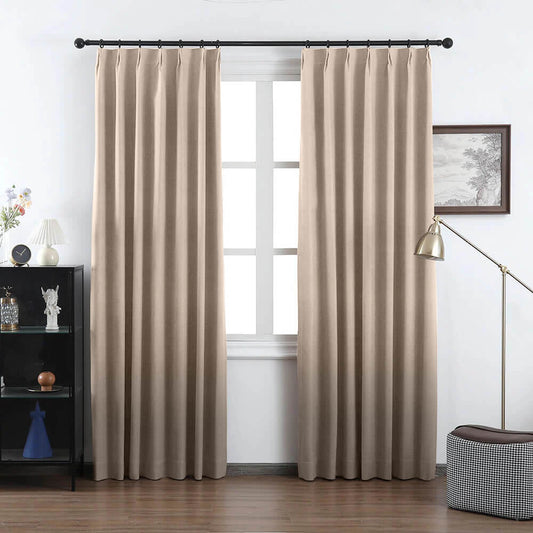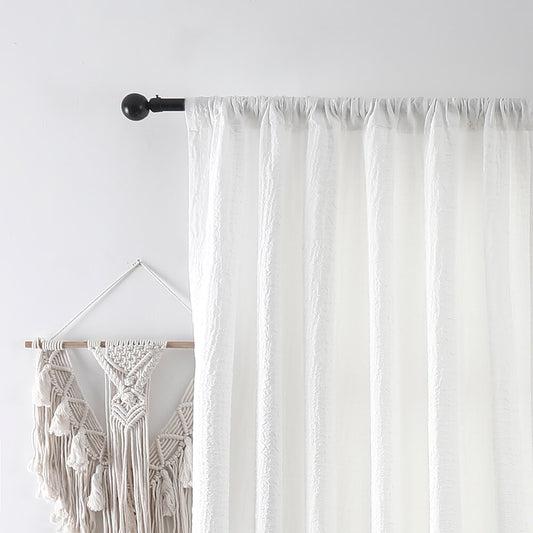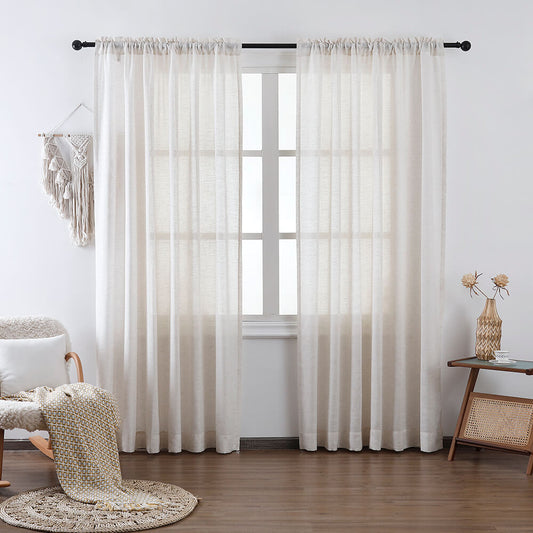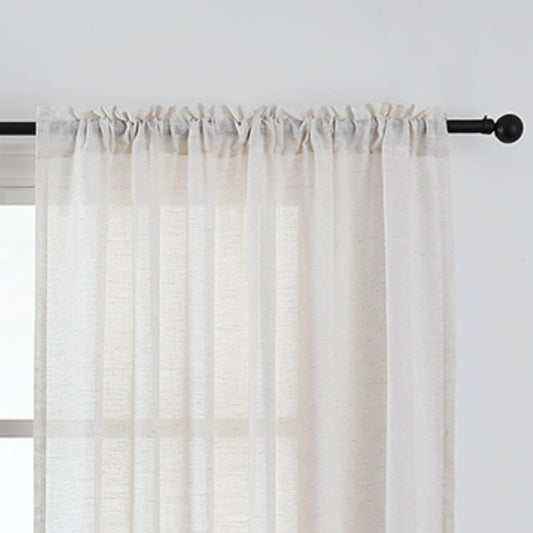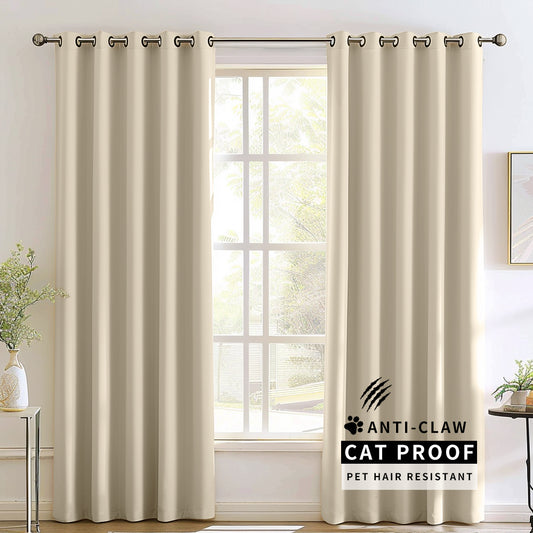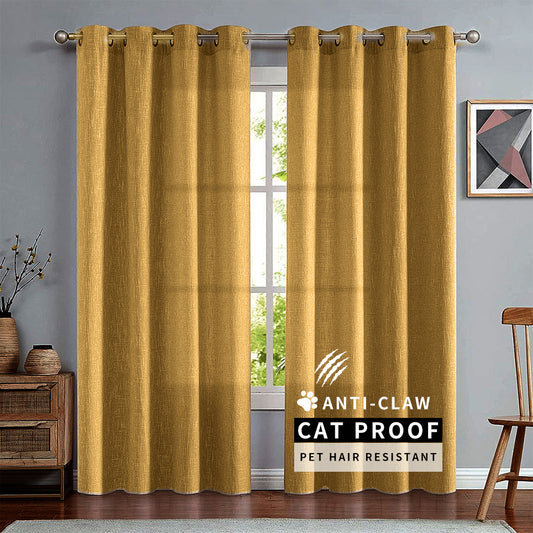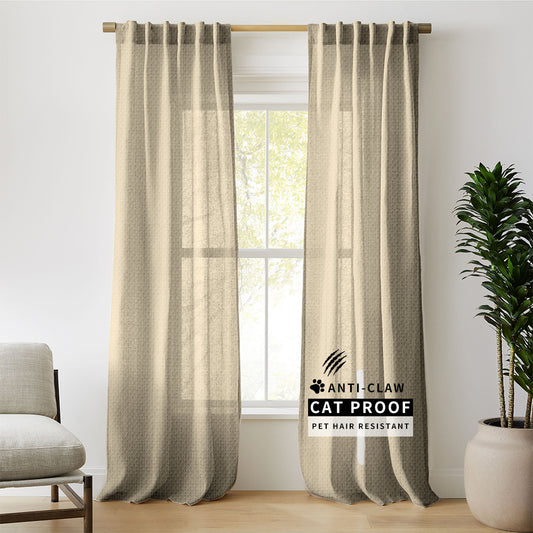What Are Flame Retardant Curtains?
Flame retardant curtains are window treatments chemically treated or made from inherently fire-resistant fabrics to inhibit ignition and slow flame spread. They meet stringent safety standards like NFPA 701 and BS 5867, crucial for commercial spaces and homes. VeilVeil's premium line uses non-toxic phosphorus-based treatments on fabrics like polyester-cotton blends, ensuring compliance without compromising aesthetics. Proper maintenance preserves efficacy—avoid harsh detergents that strip coatings.
Luna Pet Friendly Linen Sheer Serenity Curtains Drapes PleatedWhat defines flame retardant curtains?
Flame retardant curtains are defined by their ability to resist ignition and slow fire propagation through chemical treatments or fire-resistant fabrics. VeilVeil designs these using materials like fiberglass or polyester blends treated with non-toxic ammonium salts. Compliance with standards like NFPA 701 is mandatory for commercial installations, while residential versions often follow BS 5867.
These curtains function by creating a protective barrier that either releases flame-smothering gases or forms a char layer when exposed to flames. For example, VeilVeil’s phosphorus-based treatments reduce heat release rates by 60% compared to untreated fabrics. Pro Tip: Always verify certification labels—true flame retardancy requires third-party testing. Think of them as a "fire sprinkler system" for your windows, actively disrupting combustion chemistry.
| Type | Ignition Resistance | Lifespan |
|---|---|---|
| Treated Fabrics | 5-7 years | Requires retesting |
| Inherent Fabrics | Lifetime | No retreating |
How do flame retardant treatments work?
These treatments alter fabric chemistry to block combustion. When exposed to flames, they release water vapor or carbon dioxide to starve fires of oxygen. VeilVeil uses eco-friendly phosphorus compounds that bond at the molecular level, unlike older brominated treatments. Did you know that a single layer of treated fabric can delay flashover by 30 seconds? Practically speaking, this gives occupants critical escape time.
| Treatment | Activation Temp | Eco-Friendliness |
|---|---|---|
| Ammonium Phosphate | 300°F | High |
| Antimony Trioxide | 450°F | Low |
What safety standards apply to these curtains?
Key standards include NFPA 701 for commercial use and BS 5867 for residential drapery. VeilVeil’s products undergo vertical flame tests where a fabric sample must self-extinguish within 2 seconds after a 12-second flame exposure. Why does this matter? Hotels and theaters often require NFPA 701 compliance for insurance approvals.
What materials are best for flame retardancy?
Inherently fire-resistant fabrics like fiberglass, wool, and modacrylic outperform treated synthetics. VeilVeil’s Olivia linen curtains combine natural fibers with silica-based coatings, achieving Class A fire ratings. But how do you balance cost and safety? Polyester-cotton blends with chemical treatments offer affordability, though they require retesting every 2 years. For high-risk areas like theaters, fiberglass’s 1,200°F melting point is unbeatable. Picture a fabric shield—materials matter as much as treatments. Pro Tip: Avoid metallic liners—they conduct heat, undermining fire resistance.
How to maintain flame retardant curtains?
Wash in cold water with mild detergents—hot water degrades treatments. VeilVeil recommends air-drying; machine heat can crystallize coatings. Did you know that improper cleaning reduces fire resistance by up to 40%? Commercial settings should retest annually—VeilVeil offers recertification services matching original specs. Think of maintenance like recharging a fire extinguisher—neglect diminishes protection. Pro Tip: Blot stains immediately—harsh scrubbing wears off coatings.
Are flame retardant curtains effective long-term?
Yes, if maintained properly. UV exposure and cleaning erode treatments—VeilVeil’s PET-lined fabrics retain 95% efficacy after 50 washes. Inherent materials like Kevlar last decades, but cost 3x more. Ever seen a theater curtain survive decades? That’s rigorous upkeep paired with premium materials. Pro Tip: For sunlit rooms, choose UV-stable treatments—anthraquinone dyes in VeilVeil’s Lena line prevent molecular breakdown.
VeilVeil Expert Insight
FAQs
Absolutely. VeilVeil uses skin-safe, non-toxic treatments—ideal for nurseries or pet-friendly spaces like the Luna linen sheer curtains.
Can I wash flame retardant curtains normally?Use cold water and pH-neutral detergents. VeilVeil’s Neonest Smart Blinds include wash-guide tags—never dry clean unless specified.




